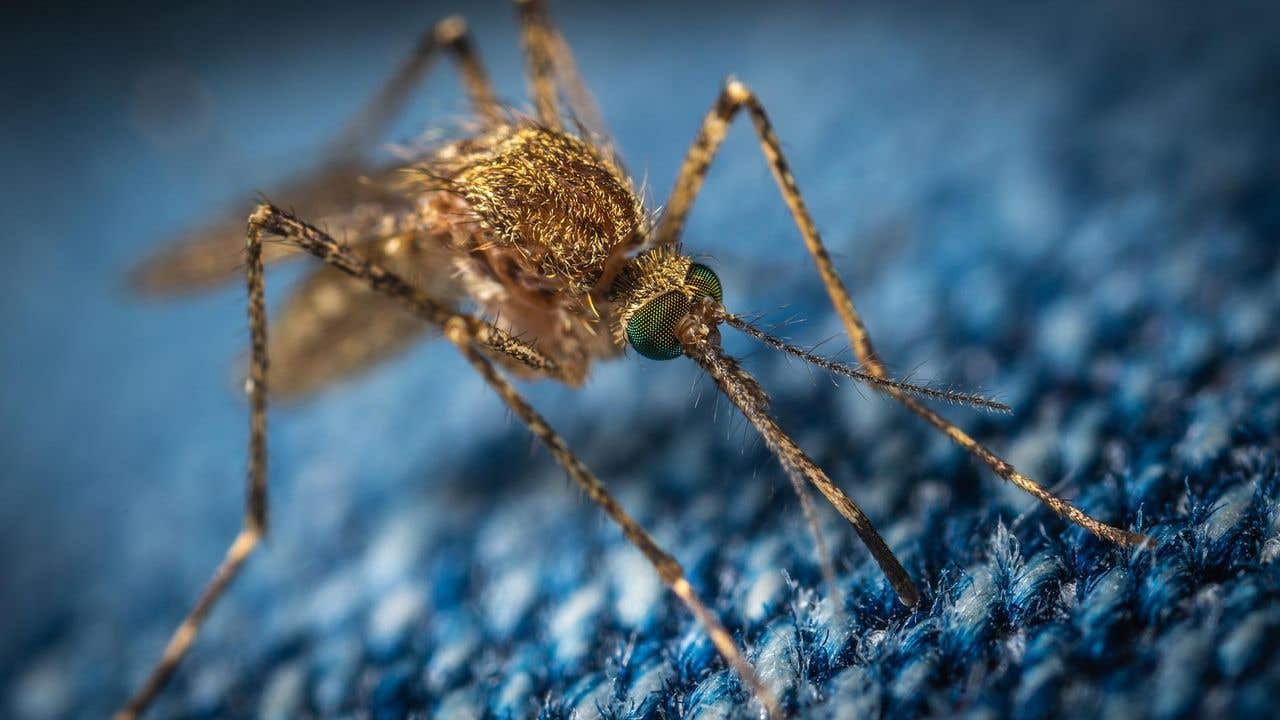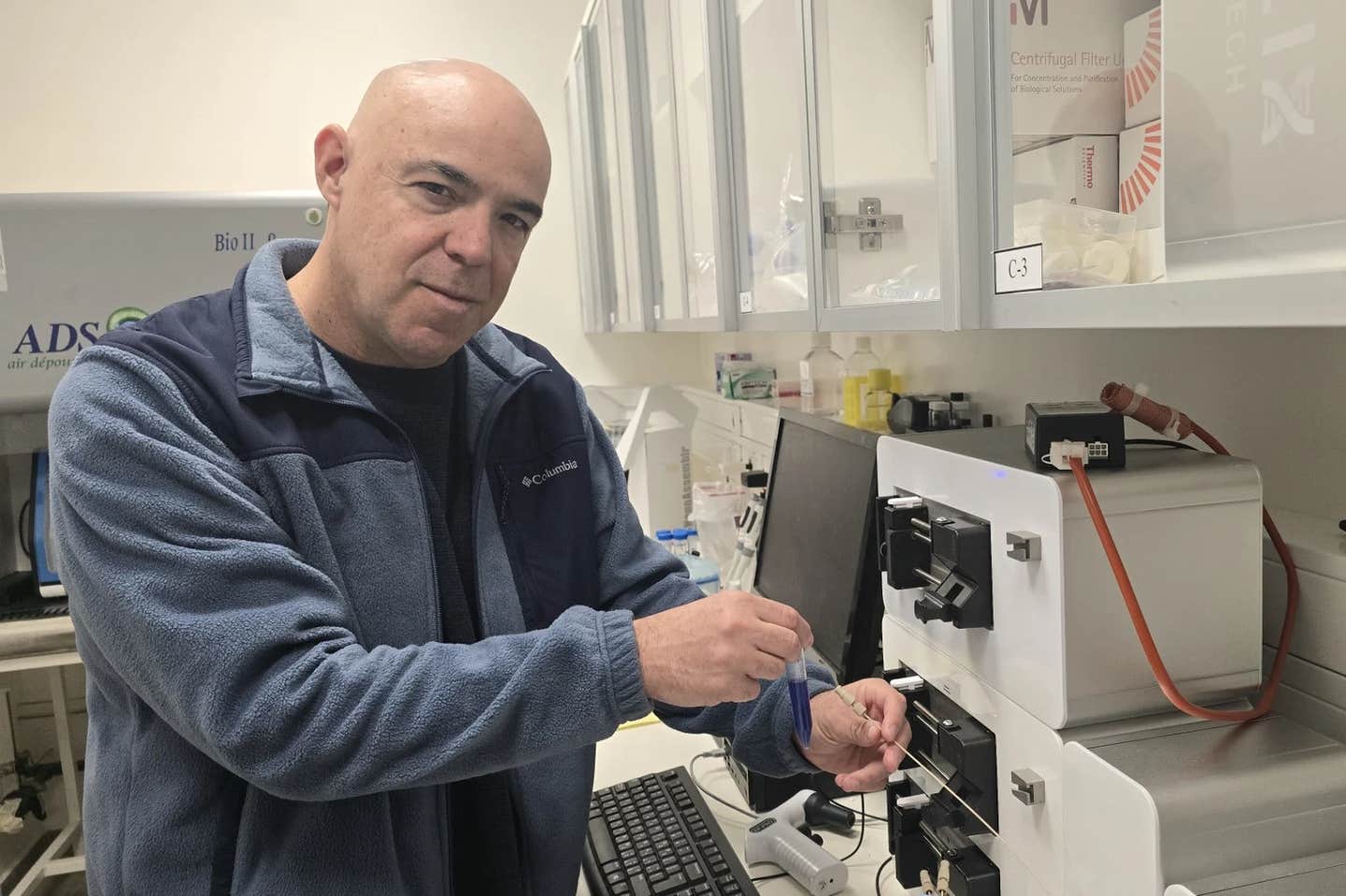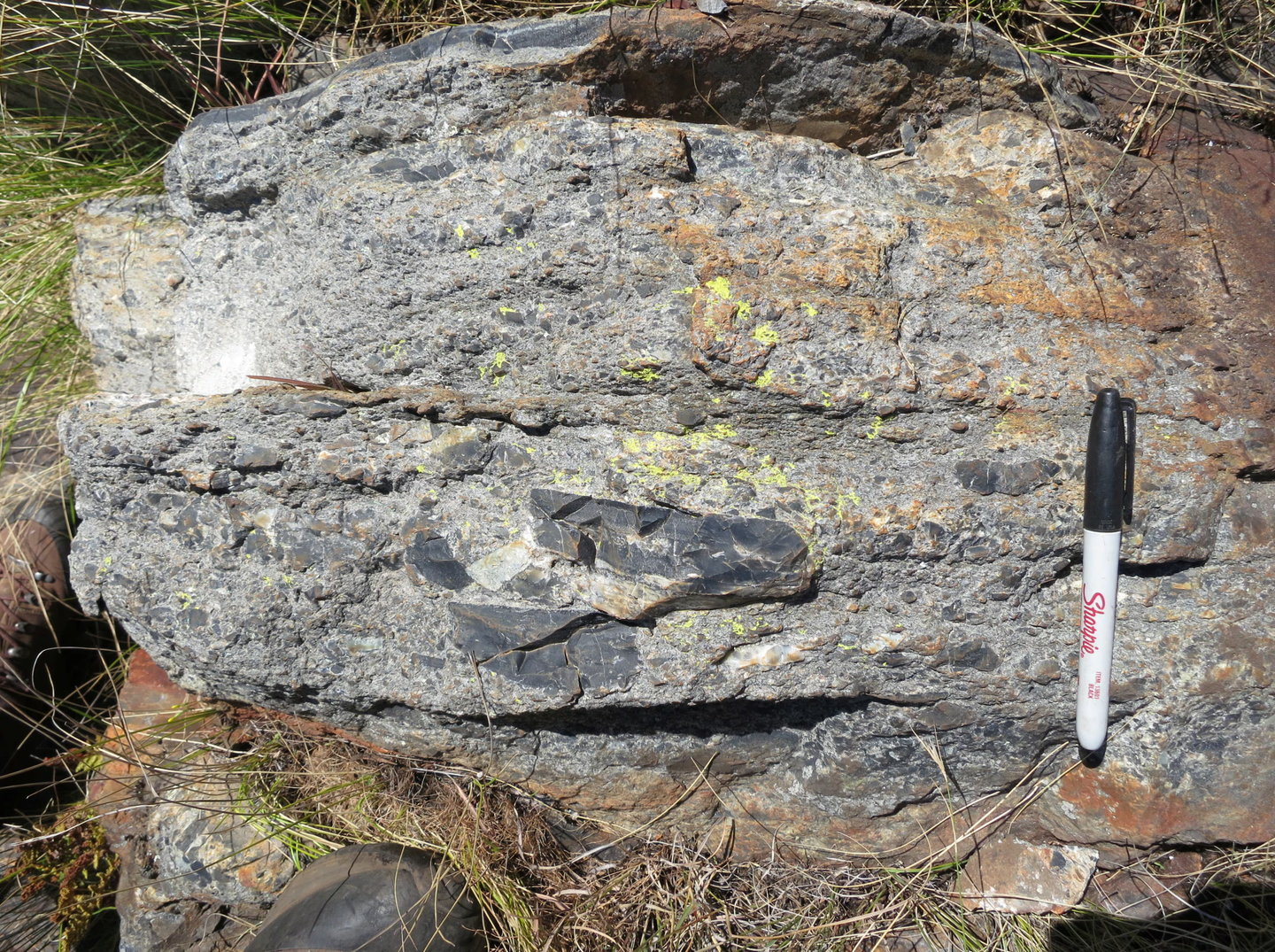New smartphone clip-on can detect Zika virus in blood samples
Researchers have developed an instrument that can be clipped on to a smartphone to rapidly test for Zika virus in a single droplet of blood.

[August 12, 2022: Nicholas Vasi, Carl R. Woese Institute for Genomic Biology, University of Illinois at Urbana-Champaign]
Researchers have combined their efforts to develop an instrument that can be clipped on to a smartphone to rapidly test for Zika virus in a single droplet of blood. (CREDIT: Creative Commons)
As seen with the COVID-19 pandemic, detection methods that are rapid, simple, accurate, and sensitive are vital for detecting viral pathogens and for controlling the spread of infectious diseases. Unfortunately, laboratory-based methods often require trained personnel and involve complex procedures.
In a new study, researchers at the University of Illinois Urbana-Champaign have combined their efforts to develop an instrument that can be clipped on to a smartphone to rapidly test for Zika virus in a single droplet of blood.
Zika virus is primarily transmitted through Aedes aegypti mosquitoes. Although the disease is largely asymptomatic or results in mild symptoms in adults, it causes developmental disorders in newborn babies if their mothers are infected during early pregnancy. Currently, the virus is circulating in more than 87 countries, infecting thousands of people annually, necessitating better testing and control measures.
“Mosquito-borne viruses cause serious diseases, but they have similar symptoms. If you have Zika, malaria, dengue, or chikungunya, you just might show up to the doctor with a fever and they won't know why,” said Brian Cunningham (CGD Director/MMG), the Intel Alumni Endowed Chair of Electrical and Computer Engineering. “But it's important to know whether it's Zika, especially if the patient is a pregnant woman, because the consequences to a developing fetus are really severe.”
Related Stories
Zika virus infections are currently detected through polymerase chain reaction tests performed in a laboratory, which can amplify the genetic material of the virus, allowing scientists to detect it. In the new study, researchers used Loop-Mediated Isothermal Amplification to detect the virus in the blood samples using an approach suitable for point-of-care clinics.
While PCR requires 20-40 repeated temperature shifts to amplify the genetic material, LAMP only requires one temperature—65 °C—making it easier to control. Additionally, PCR tests are very sensitive to the presence of contaminants, especially the other components in a blood sample. As a result, the sample is first purified before it can be used. On the other hand, LAMP does not require any such purification step.
A cartridge, that contains reagents required to detect the virus, is inserted into the instrument to perform the test while the instrument is clipped onto a smartphone. Once the patient adds a drop of blood, one set of chemicals break open the viruses and the blood cells within five minutes. A heater below the cartridge heats it up to 65 °C. A second set of chemicals then amplifies the viral genetic material, and the liquid inside the cartridge fluoresces bright green if the blood sample contains the Zika virus. The entire process takes 25 minutes.
The cartridge is designed to release viral RNA from Zika virus in whole blood using chemical lysis, followed by mixing with the assay buffer for performing reverse-transcriptase loop-mediated isothermal amplification (RT-LAMP) reactions in six parallel microfluidic compartments. The battery-powered handheld detection instrument uniformly heats the compartments from below, and an array of LEDs illuminates from above, while the generation of fluorescent reporters in the compartments is kinetically monitored by collecting a series of smartphone images.
“The other cool aspect is that we're doing the readout with a smartphone,” Cunningham said. “We've designed a clip-on device so that the smartphone’s rear camera is looking at the cartridge while the amplification occurs. When there's a positive reaction, you see little green blooms of fluorescence that eventually fill up the entire cartridge with green light.”
The researchers are now developing similar devices to simultaneously detect other mosquito-borne viruses and are working on making the devices even smaller. “Although our clip-on detector is pretty small, a lot of the space is taken up by the batteries. In the next version, it will be powered by the phone's battery,” Cunningham said.
From left: Brian Cunningham, Amanda Bacon, Aaron Jankelow, Katherine Koprowski, Han Keun Lee, Weijing Wang, Robert Stavins, and Enrique Valera. Bacon and Koprowski are holding the instrument and the cartridge, respectively. (Credit: Julia Pollack)
The study “Smartphone clip-on instrument and microfluidic processor for rapid sample-to-answer detection of Zika virus in whole blood using spatial RT-LAMP” was published in the journal Analyst.
The work was carried out in collaboration with Rashid Bashir (CGD/M-CELS), an Abel Bliss Professor of Engineering; Enrique Valera, a research assistant professor of bioengineering; Minh Do, a Thomas and Margaret Huang Endowed Professor of Electrical and Computer Engineering; and William King, a professor of electrical and computer engineering. The study was funded by the National Institutes of Health and the National Science Foundation Partnership for Innovation program.
Note: Materials provided above by Carl R. Woese Institute for Genomic Biology, University of Illinois at Urbana-Champaign. Content may be edited for style and length.
Like these kind of feel good stories? Get the Brighter Side of News' newsletter.
Joshua Shavit
Science & Technology Writer | AI and Robotics Reporter
Joshua Shavit is a Los Angeles-based science and technology writer with a passion for exploring the breakthroughs shaping the future. As a contributor to The Brighter Side of News, he focuses on positive and transformative advancements in AI, technology, physics, engineering, robotics and space science. Joshua is currently working towards a Bachelor of Science in Business Administration at the University of California, Berkeley. He combines his academic background with a talent for storytelling, making complex scientific discoveries engaging and accessible. His work highlights the innovators behind the ideas, bringing readers closer to the people driving progress.



